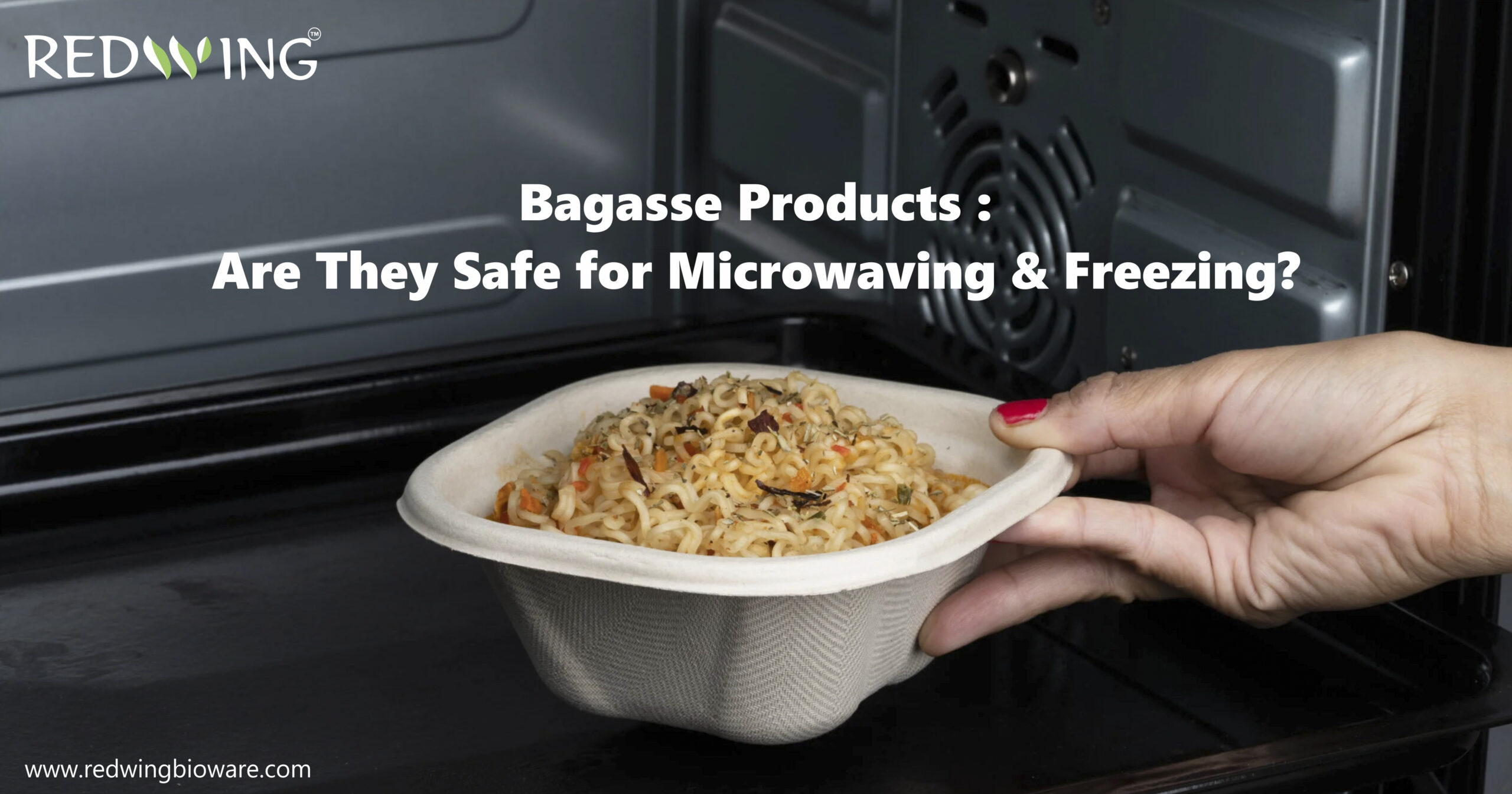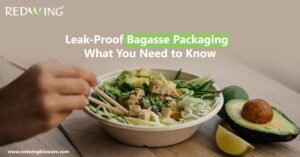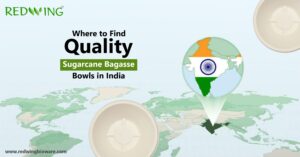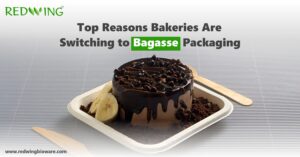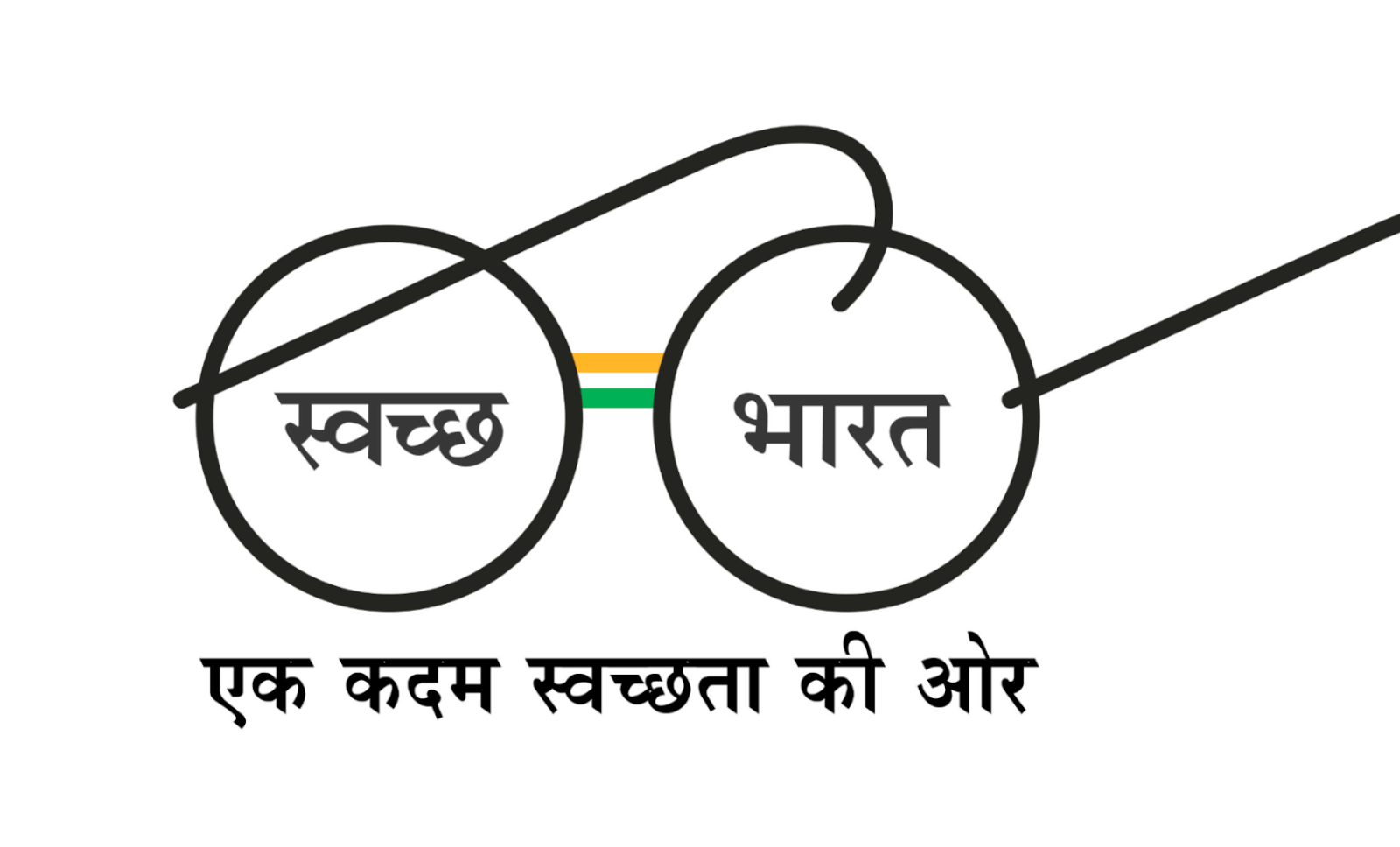Introduction
In the search for sustainable alternatives to plastic, bagasse products have emerged as a leading solution. Derived from sugarcane fiber, these eco-friendly packaging options, including bagasse plates, bagasse bowls, and food containers, provide a biodegradable and compostable alternative to traditional materials. However, many consumers and businesses are curious about their durability, particularly whether sugarcane bagasse products can safely be used in the microwave and freezer. This article provides an in-depth look at the properties, benefits, and applications of bagasse-based packaging.
What Are Bagasse Products?
Bagasse products are made from the fibrous byproduct left after extracting juice from sugarcane. Instead of discarding this material as waste, manufacturers repurpose it into sturdy and sustainable food containers, bagasse plates, and bagasse bowls. The natural composition of bagasse makes it both heat- and cold-resistant, making it an ideal choice for eco-friendly packaging.
Can Bagasse Products Withstand Heat?
Bagasse products have emerged as a leading choice in eco-friendly packaging due to their sustainable nature and ability to replace plastic. One common question among consumers is whether sugarcane bagasse products can withstand heat, making them suitable for serving hot meals, beverages, and microwave use. Understanding the heat resistance of these food containers, including bagasse plates and bagasse bowls, is essential for their practical application in households and food service industries.
Heat Resistance of Bagasse Products
Bagasse products are made from natural sugarcane fibers, which provide them with excellent heat-resistant properties. These food containers can generally withstand temperatures of up to 200°F (93°C) without melting or deforming. Unlike plastic containers, which may leach harmful chemicals when exposed to heat, sugarcane bagasse products remain safe and maintain their structural integrity, making them ideal for serving hot food.
Performance Under Hot Food and Liquids
Bagasse plates and bagasse bowls are specifically designed to handle both dry and moist foods efficiently. They do not warp or lose their shape when used to serve hot dishes, soups, or beverages. The natural fiber composition of bagasse food containers provides durability and strength, ensuring a safe dining experience even with steaming-hot meals.
How to Microwave Bagasse Products Safely
If you plan to use bagasse plates, bagasse bowls, or food containers in the microwave, follow these tips:
- Ensure the container does not contain a plastic or wax coating, which may not be microwave-safe.
- Avoid overheating or using them for extended periods beyond the recommended time.
- Check for any specific manufacturer guidelines regarding heat exposure.
Freezer Safety of Bagasse Products
Can Bagasse Products Handle Freezing Temperatures?
Unlike many biodegradable alternatives, bagasse products perform well in freezing conditions. They retain their structure and durability even at low temperatures, making them ideal for storing frozen foods.
Freezing Capabilities of Bagasse Products
Bagasse products are designed to handle both hot and cold temperatures, making them a versatile choice for food storage. Unlike traditional plastic or Styrofoam containers, which may crack or degrade over time when exposed to extreme cold, bagasse food containers provide a stable and durable option for freezing. Many manufacturers test bagasse plates and bagasse bowls to ensure they maintain their structural integrity even when exposed to sub-zero temperatures.
Resistance to Moisture in Freezing Conditions
One of the challenges of freezing food in paper-based or plant-based containers is moisture absorption. Sugarcane bagasse products have a natural resistance to liquids; however, they may require additional coatings or treatments to prevent moisture absorption over extended freezing periods. Some advanced bagasse food containers are treated with a water-resistant layer, allowing them to perform effectively in frozen storage without becoming soggy or breaking apart.
Performance in Commercial and Household Freezing
For restaurants, meal prep services, and frozen food businesses, ensuring that Eco-friendly packaging can handle freezing conditions is crucial. Bagasse food containers, plates, and bowls are commonly used for pre-packaged frozen meals, proving their effectiveness in both commercial and household freezers. When properly stored, these containers can safely hold frozen foods without compromising their structure or safety.
Thawing and Reheating Considerations
When frozen food is removed from bagasse containers, it is important to follow proper thawing and reheating guidelines. Sugarcane bagasse products are often microwave-safe, making them ideal for transferring frozen meals directly from the freezer to the microwave. However, it is recommended to check for manufacturer specifications regarding reheating guidelines to ensure safety and optimal performance.
How to Store Food in Bagasse Containers
To ensure optimal results, follow these best practices when freezing food in bagasse food containers:
- Do not put hot food in the freezer until it has cooled.
- Ensure the container is sealed properly to prevent moisture absorption.
- Label the container with the storage date to track food freshness.
Comparing Bagasse with Other Food Packaging Materials
To better understand the advantages of bagasse food containers, let’s compare them with traditional packaging options:
| Feature | Bagasse Products | Plastic Containers | Styrofoam Containers |
| Microwave Safety | Safe, toxin-free | May release harmful chemicals | Unsafe, melts easily |
| Freezer Suitability | Excellent, durable | Can become brittle | Poor, cracks in cold |
| Biodegradability | Compostable in 90 days | Takes 500+ years to decompose | Non-biodegradable |
| Environmental Impact | Sustainable, reduces waste | High pollution risk | High landfill contribution |
From this comparison, it’s clear that bagasse products offer superior food storage safety, environmental benefits, and usability compared to plastic and Styrofoam alternatives.
Benefits of Using Bagasse Products for Microwaving & Freezing
1. Eco-Friendly Packaging
Unlike plastic and Styrofoam, sugarcane bagasse products are biodegradable and compostable, breaking down within 60-90 days after disposal. They are a great option for companies trying to lessen their environmental Impact because of this.
2. Safe for Food Contact
Bagasse plates, bagasse bowls, and food containers are free from harmful chemicals like BPA and PFAS, ensuring they do not leach toxins into food when heated or frozen.
3. Durable and Leak-Resistant
Despite being made from natural materials, bagasse food containers are highly durable. They can hold liquids and oily foods without leaking, making them perfect for takeaway meals, frozen food storage, and reheating leftovers.
4. Temperature Versatility
One of the biggest advantages of bagasse products is their ability to handle both high and low temperatures, making them a versatile choice for restaurants, catering services, and eco-conscious consumers.
5. A Sustainable Alternative to Plastic
By choosing bagasse plates, bagasse bowls, and food containers, consumers and businesses contribute to reducing plastic waste and promoting a circular economy.
Applications of Bagasse Products in Various Industries
1. Food & Beverage Industry
Restaurants, cafes, and food delivery services widely use bagasse food containers due to their ability to handle hot and cold foods.
2. Airline and Catering Services
Airlines prefer eco-friendly packaging for in-flight meals, making sugarcane bagasse products a preferred choice due to their durability and sustainability.
3. Retail and Grocery Stores
Supermarkets and grocery stores use bagasse bowls and plates for packaging pre-cooked meals, frozen food, and deli items.
4. Events and Outdoor Catering
Bagasse tableware is popular for events and outdoor catering because it is disposable yet sustainable, reducing waste at large gatherings.
Why Choose Bagasse for Food Packaging?
Businesses and consumers are increasingly opting for sugarcane bagasse products due to their multiple advantages:
- Eco-Friendly: Reduces carbon footprint and landfill waste.
- Safe for Hot and Cold Foods: Ideal for restaurants, takeout, and home use.
- Regulatory Compliance: Meets food safety standards in various countries.
- Cost-Effective: Comparable in price to plastic containers while offering sustainability benefits.
Conclusion
Bagasse products, including sugarcane bagasse food containers, bagasse plates, and bagasse bowls, offer a safe, sustainable, and versatile alternative to plastic packaging. Their ability to withstand both microwaving and freezing makes them a practical choice for everyday use. As businesses and consumers move toward eco-friendly packaging, bagasse continues to prove its value as the ideal solution for food storage and serving needs. Choosing bagasse products is not only beneficial for convenience but also a step towards a greener future.
Reference:
Food packaging by Wikipedia[1].
Yes, bagasse products are freezer-safe and can withstand low temperatures without breaking or becoming brittle. Sugarcane bagasse products are designed to hold up well in freezing conditions, making them ideal for storing frozen meals, ice creams, and other perishable food items. Unlike plastic food containers, bagasse plates and bagasse bowls do not crack or degrade when frozen, ensuring safe and eco-friendly packaging for food storage.
No, sugarcane bagasse products are not recommended for oven use. While they are heat-resistant and can handle temperatures up to 200°F (93°C), excessive heat in an oven may cause them to weaken or burn. For safe heating, it’s best to use them in a microwave or serve hot food rather than expose them to prolonged high temperatures.
Yes, bagasse food containers are microwave-safe and can be used to reheat food without releasing harmful chemicals. Unlike plastic, they do not leach toxins when heated, making them a safer alternative for hot meals. However, they should not be exposed to extreme heat for prolonged periods.
Bagasse plates and bagasse bowls are 100% compostable and typically break down within 60 to 90 days in commercial composting facilities. Their quick decomposition makes them an excellent alternative to plastic and foam containers, supporting eco-friendly packaging solutions.
Yes, bagasse food containers are naturally water-resistant and can hold hot and cold liquids without leaking. Their sturdy construction makes them ideal for serving soups, curries, and beverages without the need for additional coatings or plastics.

